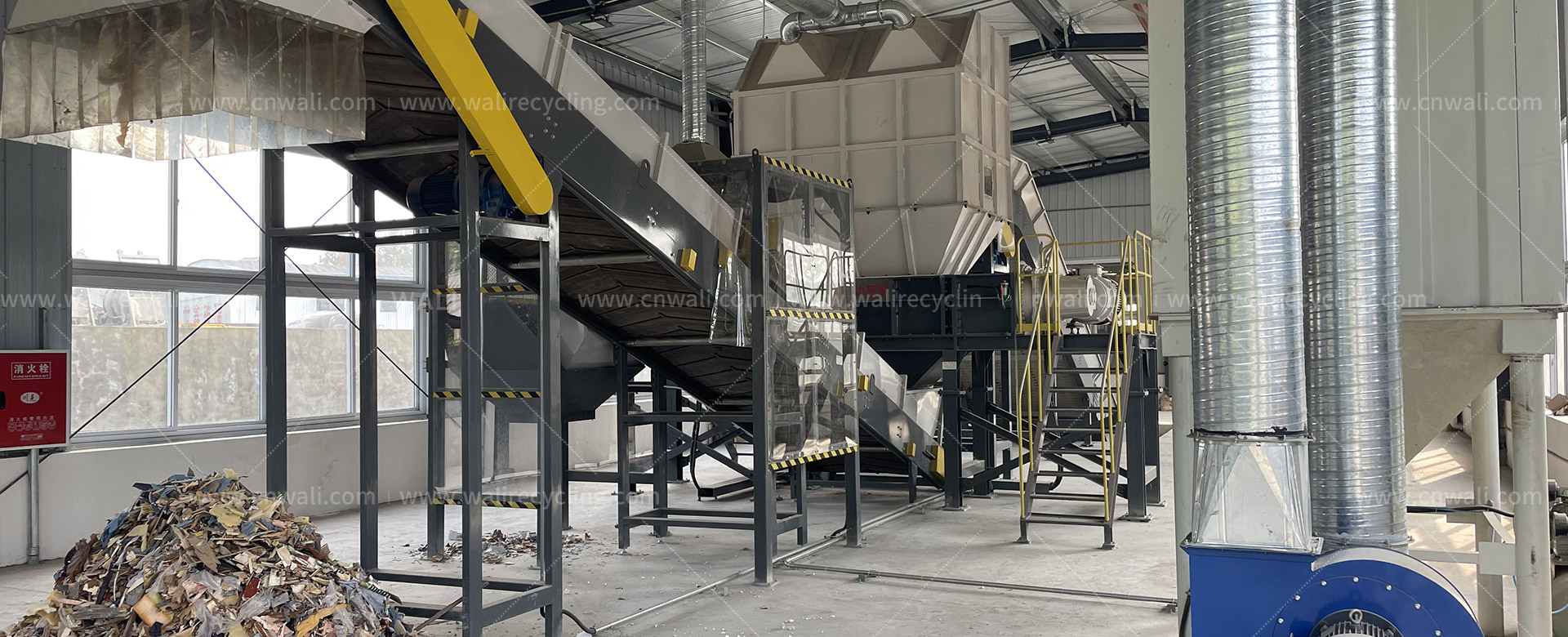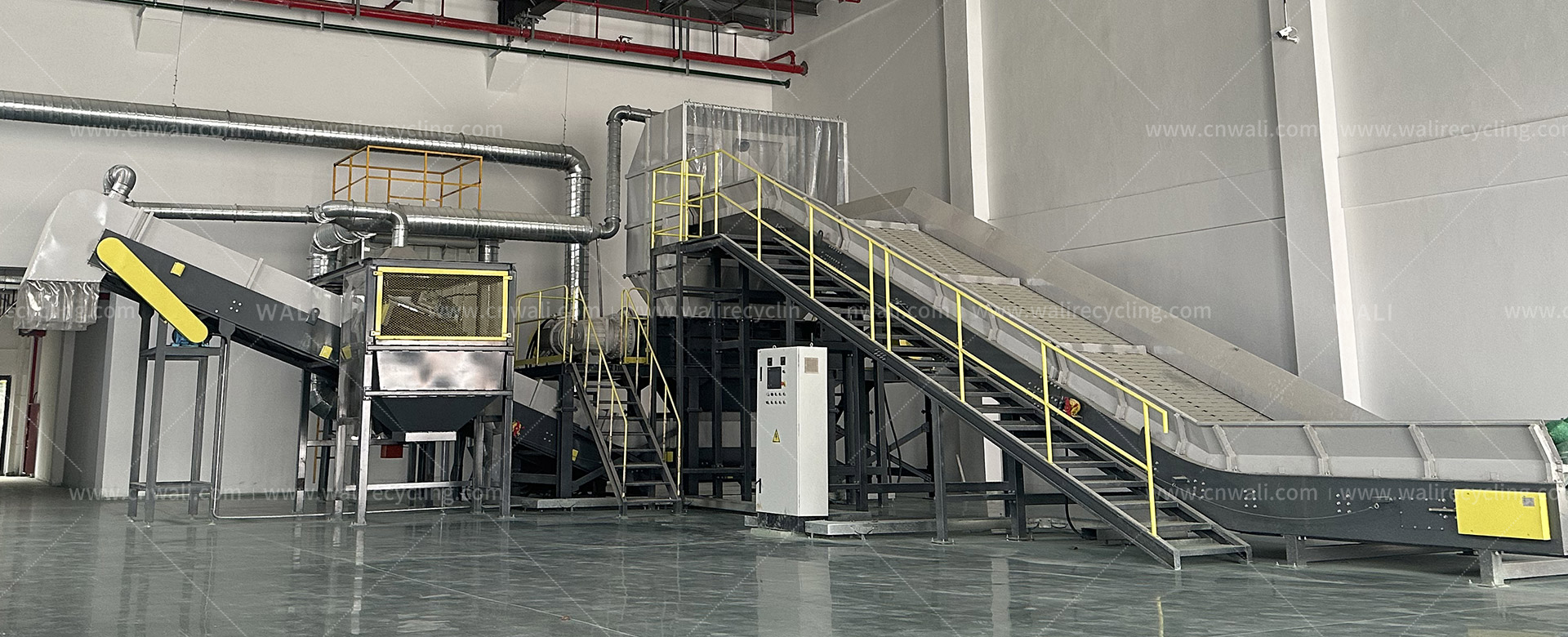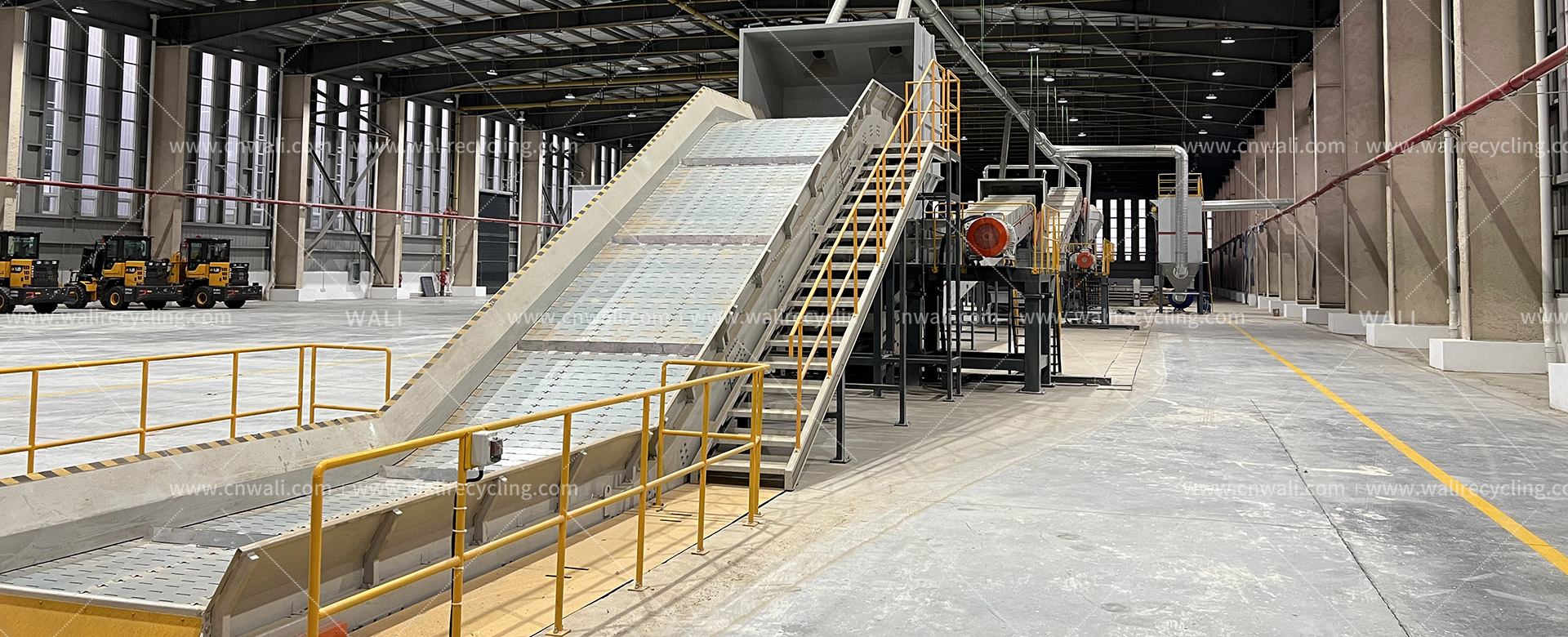WALI Bulky Waste Recycling System: Breaking Through Municipal Solid Waste Bottlenecks
Introduction
As urbanization accelerates, municipal solid waste management has become a global challenge. Statistics show that China’s annual urban domestic waste output has exceeded 300 million tons, of which bulky waste (such as discarded furniture, appliances, and construction debris) accounts for 15%-20%, with an annual growth rate exceeding 8%.
For a long time, bulky waste disposal has been trapped in a vicious cycle of “difficult collection & transportation, challenging processing, and low recycling efficiency.”
Firstly, due to their large size and heavy weight, transportation costs remain prohibitively high, leading many communities to resort to open-air dumping or improper disposal—posing a “waste siege” risk.
Secondly, disassembly requires specialized equipment and expertise, yet small-scale, informal operations often result in dust and noise pollution, along with heavy metal leakage hazards.
Lastly, with a resource recovery rate below 30%, vast amounts of reusable materials (such as metals, materiale plastice, and wood) end up as low-value waste, leading to severe resource depletion.
Traditional disposal methods like landfilling and incineration not only lead to resource waste but also pose multiple environmental risks, including land occupation and pollution diffusion.
How can we break this deadlock? Establishing a comprehensive bulky waste recycling system has become an imperative choice for sustainable urban development.
Sistem de reciclare a deșeurilor voluminoase
The WALI Bulky Waste Resource Treatment System is a high-efficiency processing solution that integrates intelligence, automation, and resource utilization. The system’s core equipment includes bulky waste shredder, conveyors, magnetic separators, PLC Integrated Line Control System. Through an intelligent control system, the entire process is automated. This system features a fully enclosed design and is equipped with high-efficiency dust removal devices to achieve environmentally friendly production.
During the feeding stage, the system supports multiple flexible methods such as chain plate feeding, and forklift feeding, catering to different scenario requirements.
In the processing stage, bulky waste is initially crushed by the primary crusher and then further processed by the fine crusher to ensure the material reaches the desired discharge size.
The crushed material is then separated by magnetic separation equipment to remove metal impurities, and lightweight materials are sorted out by air separation equipment.
Finally, the lightweight materials are compressed and shaped by a baler to produce block-shaped SRF (Solid Recovered Fuel) alternative fuel, which is convenient for storage and transportation.
Projects
The WALI Bulk Waste Resource Treatment System is a highly efficient crushing solution customized based on the actual needs of customers, offering diversified crushing processing technologies.

Hydraulic Drive Project

Electric Motor Drive Project

Secondary Crushing Project
Feedback
From design to delivery, we offer one-stop turnkey project services. Upon order confirmation, our professional team immediately initiates standardized production, ensuring strict quality and timeline control throughout the entire process—from raw material procurement to final inspection—guaranteeing the delivery of ready-to-use, high-performance equipment.
Transparent communication throughout production, rapid response to customer needs and customized solutions tailored to specific requirements.
With stable equipment performance and key metrics surpassing industry standards, we consistently create value for our clients, earning widespread recognition in the field.
Concluzie
With over a decade of expertise in the solid waste treatment sector, Wali Team has delivered high-efficiency solutions to 40+ cities across China, maintaining a 100% customer satisfaction rate.
Our professional bulky waste recycling system not only effectively addresses environmental challenges posed by bulky waste but also achieves a resource recovery rate exceeding 90%, providing municipal authorities with cost-effective and eco-friendly disposal solutions.
 Wali Shredder
Wali Shredder
